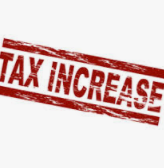
Non Government Debt Securities – General Aspects
Price of a Bond
The price of a bond is the present value of future interest payments (an annuity) plus the present value of the maturity (face) value at its yield rate (rate to maturity). There is an inverse relationship between the yield rate and selling price (present value). The higher the yield rate, the lower the present value (selling price); the lower the yield rate, the higher the present value (selling price).
Bond Quotation Prices
Bonds are quoted as a percent of their face (maturity) value. To convert the quotation to a dollar amount, convert the quote number to a decimal and multiply by the face value of the bond.
Example 1.
A $1,000 face value bond is quoted at 95. The price will be 95% of $1,000 or .95 x $1,000 = $950.
Example 2.
A $1,000 face value bond is quoted at 101. The price will be 101% of $1,000 or 1.01 x 1,000 = $1,010.
Example 3.
A $1,000 face value bond is quoted at 90 1/4. The price will be 90.25% of $1,000 or .9025 x $1,000 = $902.50.
Example 4.
A $1,000 face value bond is quoted at 105 1/8. The price will be 105.125% of $1,000 or 1.05125 x 1,000 = $1,051.25. (1/8 = .125)
The total amount paid for a bond is the selling price plus purchase fees and accrued interest since the previous interest payment date. When the next interest payment date arrives, the holder of the bond will receive the interest for the full interest payment period. period. However, the cost basis does not include accrued interest paid.
Example
On April 1, 2013, Jason purchased $10,000 face value bonds for 105, plus $63 accrued interest (.05 x $10,000 x 3/12) and a $300 sales commission. The bonds pay annual interest of 5%, payable semiannually on July 31 and December 31. The total purchase price is $10,863 [(1.05 x $10,000 + $63 + $300)]. The cost (adjusted basis) is $10,800 ($10,500 purchase price plus $300 commission). On July 31 and December 31, he will receive $250 interest. For 2013, he will report $467 interest ($500 received – $63 accrued and paid at purchase date) on form 1040, Schedule B.
Adjusted Basis
When a bond is purchased, the original cost (adjusted basis) includes purchase fees but excludes accrued interest at purchase date. If bonds are purchased at a discount (less than face value) or a premium (more than face value), the taxpayer can elect to amortize the discount or premium over the remaining life (number of months to maturity) of the bond. (see illustrations below). The amortization is an adjustment of the contract (nominal) interest received and the adjusted basis (see example below). Discount amortization increases the contract interest received reported on form 1040, Schedule B) and the adjusted basis. Premium amortization decreases the contract interest received and the adjusted basis (see example below). Cost plus discount amortization or minus the premium amortization, becomes the new adjusted basis. If the amortized premium exceeds the contract interest, the excess is taken as a miscellaneous itemized deduction on line 28 of form 1040 Schedule A. It is not reduced by 2% of AGI.
If a taxpayer does not elect to amortize the discount, the unamortized discount is reported as interest income at maturity or sale date). If purchased for a premium, the unamortized amount is reported as a capital loss.
Amortization of discount or premium
If the taxpayer elects to amortize the discount or premium, one of two methods apply depending on purchase date. For bonds purchased prior to 9/27/85, discount or premium is amortized ratably over the life of the bond (straight-line method). For bonds purchased after 9/27/85, the constant (effective) yield method must be used. If an election is made to amortize the premium or discount, ALL similar bonds purchased thereafter must be amortized. The election to amortize cannot be revoked without IRS approval (this is considered a change in an accounting method). If you file your return and fail to amortize the bonds in the first year the bonds are purchased, you can’t change your mind and make the election for that year by filing an amended return. The amortization is reported on a separate line on form 1040, Schedule B, and is labeled “ABP Adjustment”. Discount amortization is an addition and premium amortization is a subtraction.
Convertible Bonds
The conversion premium can not be amortized but must reduce the cost of the bonds to get the adjusted purchase cost assigned to the stock. Any difference between the adjusted purchase cost and face (maturity) value of the bonds is the premium or discount.
When bonds are converted into common stock, no gain or loss is recognized. The basis of the stock is the adjusted basis of the bonds. The holding period of the stock starts with the bonds acquisition date.
Callable Bonds
Regardless of issue date, the amortization time period is based on either the maturity or earlier call date, depending on which one results in a smaller yearly addition (discount) or subtraction (premium). If the bond is called before maturity, the unamortized premium be taken as an ordinary loss in the year called.
Amortization using the constant yield method.
The amortization is the difference between the effective interest (yield rate multiplied by the adjusted basis of the bonds) and the contract interest.
(a) Purchased at a discount.
On August 1, 2013, Jim, a cash basis taxpayer, purchased $100,000 face (maturity) value bonds for $90,000 paying 5% contract interest per year, payable semi-annually July 1 and December 31. The bonds mature August 1, 2023. The cost (adjusted basis) of the bonds excludes $208 accrued interest ($100,000 x .05 x 1/12). The yield rate is 6.5%. On December 31, he receives a $2,500 semiannual interest. Amortization for 2013 is $63 [$2,437 effective interest ($90,000 x .065 x 5/12) – $2,500 contract interest]. Interest income reported on form 1040, Schedule B will be $2,355 ($2,500 contract interest received – $208 contract interest paid at purchase + $63 discount amortization). The adjusted basis of the bonds will be $90,063 ($90,000 cost + $63 amortization.
For 2014, Jim will receive $5,000 contract interest. Amortization for 2014 is $854 [$5,854 effective interest ($90,063 x .065) – $5,000 contract interest]. Interest income reported on form 1040, Schedule B will be $ 5,854 ($5,000 contract interest received + $854 discount amortization). The adjusted basis of the bonds will be $90,917 ($90,063 adjusted basis at 12-31-13 + $854 amortization for 2014).
(b) Purchased at a premium
On August 1, 2013, Jim a cash basis taxpayer, purchased $100,000 face (maturity) value bonds for $110,000 paying 5% contract interest per year, payable semi-annually July 1 and December 31. The bonds mature August 1, 2023. The cost (adjusted basis) of the bonds excludes $208 accrued interest ($100,000 x .05 x 1/12). The yield rate is 3.5%. For 2013, Jim will receive $2,500 contract interest. The premium amortization for 2013 is $896 [$2,500 contract interest – $1,604 effective interest ($110,000 x .035 x 5/12]. For 2013, interest income reported on form 1040, Schedule B is $1,396 ($2,500 – $208 contract interest paid at purchase – $896 amortization). The adjusted basis of the bonds at 12-31-13 will be $109,104 ($110,000 [cost (adjusted basis) – $896 amortization).
For 2014, Jim will receive $5,000 contract interest. The premium amortization is $1,181 [$5,000 contract interest – $3,819 effective interest ($109,104 x .035)]. Interest income reported for 2013 is $3,819 ($5,000 – $1,181 amortization). The adjusted basis of the bonds at 12-31-13 will be $107,923 $109,104 adjusted basis at 12-31-13 – 1,181 amortization for 2014).
Sale of bonds before maturity date
If bonds are sold before maturity date, the gain or loss is the difference between the adjusted basis (you must adjust the previous year-end adjusted basis by any discount or premium amortization from the beginning of the year to the date of sale) and net sales price, excluding accrued interest received.
Zero Coupon Bonds
A zero coupon bond does not pay interest and is sold at a discount. The discount must be amortized each year and reported as interest income. As with bonds paying interest, the amortization increases the adjusted basis of the bonds.
In accordance with Circular 230 Disclosure




















1 comment on “Income Tax Aspects of Non-business Capital Gains and Losses – Part IV”
I understand that in 2014 (due to the affordable health care act) there will be an additional 3.8% capital gains tax. This is in addition to the 15% tax currently on capital gains, raising it to 18.8%. I’m wondering if this is on ALL Capital Gains in 2014 including sale of stock, home sales, other securities etc. please reply Thank You, Emil
Comments are closed.